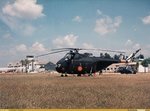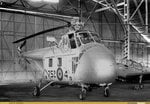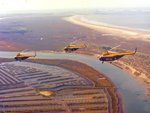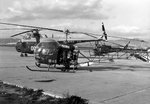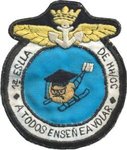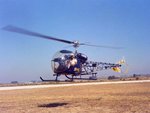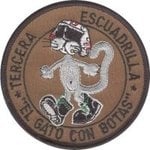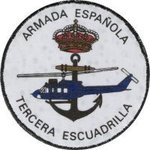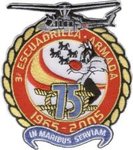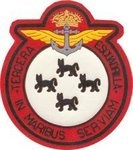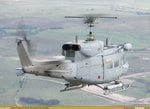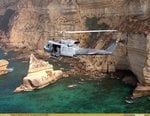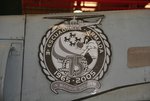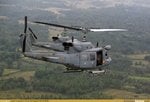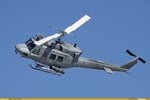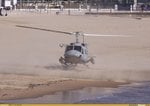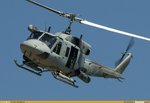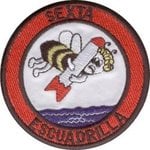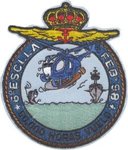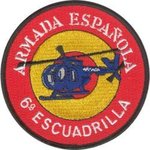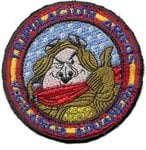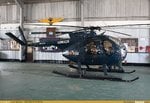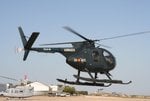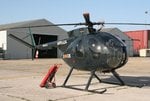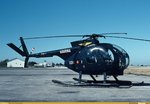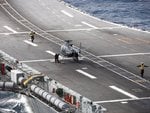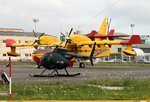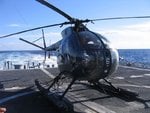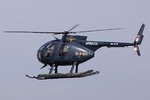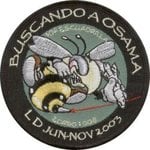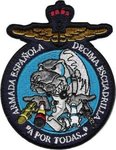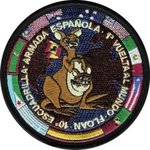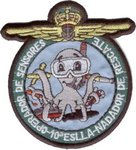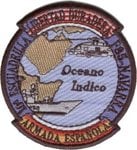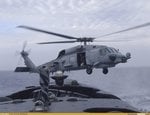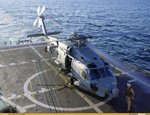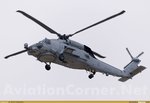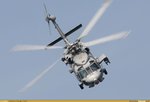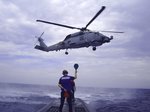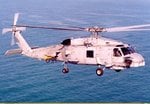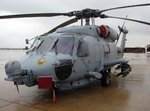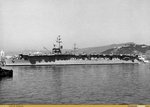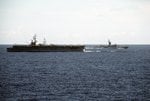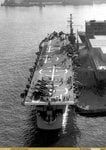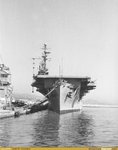- Thread starter
- #21
Navigation
Install the app
How to install the app on iOS
Follow along with the video below to see how to install our site as a web app on your home screen.
Note: This feature may not be available in some browsers.
More options
You are using an out of date browser. It may not display this or other websites correctly.
You should upgrade or use an alternative browser.
You should upgrade or use an alternative browser.
Spanish Navy Air Arm
- Thread starter gekho
- Start date
Ad: This forum contains affiliate links to products on Amazon and eBay. More information in Terms and rules
More options
Who Replied?- Thread starter
- #22
The Bell 47 is a two-bladed, single engine, light helicopter manufactured by Bell Helicopter. Based on the third Model 30 prototype, Bell's first helicopter designed by Arthur M. Young, the Bell 47 became the first helicopter certified for civilian use on 8 March 1946. More than 5,600 Bell 47 aircraft were produced, including aircraft produced under license by Agusta in Italy, Kawasaki Heavy Industries in Japan, and Westland Aircraft in the United Kingdom. The Bell 47J Ranger is modified version with a fully enclosed cabin and fuselage.Early models were variable in appearance, with open cockpits or sheet metal cabins, fabric covered or open structures, some with four-wheel landing gear. Later model D and Korean War H-13D and E types settled to a more utilitarian style. The most common model, the 47G introduced in 1953, can be recognized by the full bubble canopy, exposed welded-tube tail boom, saddle fuel tanks, and skid landing gear.
The later three-seat 47H had an enclosed cabin with full cowling and monocoque tail boom. It was an effort to market a "luxury" version of the basic 47G. Relatively few were produced. Engines were Franklin or Lycoming horizontally-opposed piston engines of 200 to 305 HP (150 to 230 kW). Seating varied from two (early 47s and the later G-5A) to four (the J and KH-4). As of 2005, many are still in use as trainers and in agriculture. Bell 47s were produced in Japan by a Bell and Kawasaki venture; this led to the Kawasaki KH-4 variant, a four seat version of the Model 47 with a cabin similar to the Bell 47J. It differed from the "J" in having a standard uncovered tailboom and fuel tanks like the G series. They were sold throughout Asia, and some were used in Australia.
In Spain, the AB-47 Sioux replaced the Aerotécnica AC-12 (if you want more information about this helicopter, take a look to my thread about the Cuatro Vientos Museum) at the Trainning School of Cuatro Vientos. In 1978, when the school was moved to Granada, all these helicopters joined the 78 Trainning Wing. With these helicopters, more than 1.376 pilots of the three Armys, the police and the Civil Guards learnt to fly. The last examples were retired from service at the end of 80s.
The later three-seat 47H had an enclosed cabin with full cowling and monocoque tail boom. It was an effort to market a "luxury" version of the basic 47G. Relatively few were produced. Engines were Franklin or Lycoming horizontally-opposed piston engines of 200 to 305 HP (150 to 230 kW). Seating varied from two (early 47s and the later G-5A) to four (the J and KH-4). As of 2005, many are still in use as trainers and in agriculture. Bell 47s were produced in Japan by a Bell and Kawasaki venture; this led to the Kawasaki KH-4 variant, a four seat version of the Model 47 with a cabin similar to the Bell 47J. It differed from the "J" in having a standard uncovered tailboom and fuel tanks like the G series. They were sold throughout Asia, and some were used in Australia.
In Spain, the AB-47 Sioux replaced the Aerotécnica AC-12 (if you want more information about this helicopter, take a look to my thread about the Cuatro Vientos Museum) at the Trainning School of Cuatro Vientos. In 1978, when the school was moved to Granada, all these helicopters joined the 78 Trainning Wing. With these helicopters, more than 1.376 pilots of the three Armys, the police and the Civil Guards learnt to fly. The last examples were retired from service at the end of 80s.
Attachments
Last edited:
wheelsup_cavu
1st Sergeant
Cool pictures.
Sorry but this patch cracks me up...
http://www.ww2aircraft.net/forum/at...d1271497996-spanish-navy-air-arm-2esc1ur6.jpg
Wheels
Sorry but this patch cracks me up...
http://www.ww2aircraft.net/forum/at...d1271497996-spanish-navy-air-arm-2esc1ur6.jpg
Wheels
- Thread starter
- #24
The Bell UH-1N Twin Huey is a medium military helicopter that first flew in April, 1969. The UH-1N has a fifteen seat configuration, with one pilot and fourteen passengers. In cargo configuration the UH-1N has an internal capacity of 220 ft³ (6.23 m³). An external load of 5,000 lb (2,268 kg) can be carried by the UH-1N. The CUH-1N (later CH-135) Twin Huey was the original version, first ordered by the Canadian Forces. Based on the stretched fuselage Bell 205, the Bell 212 was originally developed for the Canadian Forces (CF) under the designation CUH-1N Twin Huey. Later the CF adopted a new designation system and the aircraft was re-designated as the CH-135 Twin Huey. The CF approved the development of the aircraft on 1 May 1968 and purchased 50 aircraft, with deliveries commencing in May 1971.
The US military came very close to not procuring the Twin Huey. The purchase of the aircraft for US military use was opposed by the Chairman of the House Armed Services Committee at the time, L. Mendel Rivers. Rivers took this position because the aircraft powerplant, the Pratt Whitney Canada PT6T was produced in Canada. The Canadian government had not supported US involvement in Vietnam and had opposed US policies in southeast Asia, as well as accepting US draft dodgers. Rivers was also concerned that procurement of the engines would result in a negative trade deficit situation with Canada. Congress only approved the purchase when it was assured that a US source would be found for the PT6T/T400 engines. As a result the United States military services ordered 294 Bell 212s under the designation UH-1N, with deliveries commencing in 1970. Unlike in the Canadian Forces, in US service, the UH-1N retained the official name "Iroquois" from the single engined UH-1 variants, although US service personnel refer to the aircraft as a "Huey" or "Twin Huey". The Bell 412 is a further development of the Bell 212, the major difference being the composite four-blade main rotor. The UH-1N has also been developed into the upgraded, four-blade UH-1Y.
Although the Spanish Navy operates four helicopter types, only two of these operate from the Principe de Asturias: the SH-3H Sea King and the Agusta-Bell AB 212ASW. The Agusta-Bell AB 212ASW aboard the Principe de Asturias belongs to 3 Escuadrilla, nicknamed "The Cat Squadron". Although the AB 212ASW is an Anti Submarine Warfare helicopter, it operates in the SAR role while deployed with the carrier. During daylight operations, the SAR aircrews stand by to launch within minutes if rescue is required. During night operations, the AB 212 remains airborne, hovering close the aircraft carrier to provide immediate assistance in case of emergency. When not assigned to SAR duty at the aircraft carrier, 3 Escuadrilla provides close air support for the Spanish Marines, armed with machineguns and rocket pods.
The US military came very close to not procuring the Twin Huey. The purchase of the aircraft for US military use was opposed by the Chairman of the House Armed Services Committee at the time, L. Mendel Rivers. Rivers took this position because the aircraft powerplant, the Pratt Whitney Canada PT6T was produced in Canada. The Canadian government had not supported US involvement in Vietnam and had opposed US policies in southeast Asia, as well as accepting US draft dodgers. Rivers was also concerned that procurement of the engines would result in a negative trade deficit situation with Canada. Congress only approved the purchase when it was assured that a US source would be found for the PT6T/T400 engines. As a result the United States military services ordered 294 Bell 212s under the designation UH-1N, with deliveries commencing in 1970. Unlike in the Canadian Forces, in US service, the UH-1N retained the official name "Iroquois" from the single engined UH-1 variants, although US service personnel refer to the aircraft as a "Huey" or "Twin Huey". The Bell 412 is a further development of the Bell 212, the major difference being the composite four-blade main rotor. The UH-1N has also been developed into the upgraded, four-blade UH-1Y.
Although the Spanish Navy operates four helicopter types, only two of these operate from the Principe de Asturias: the SH-3H Sea King and the Agusta-Bell AB 212ASW. The Agusta-Bell AB 212ASW aboard the Principe de Asturias belongs to 3 Escuadrilla, nicknamed "The Cat Squadron". Although the AB 212ASW is an Anti Submarine Warfare helicopter, it operates in the SAR role while deployed with the carrier. During daylight operations, the SAR aircrews stand by to launch within minutes if rescue is required. During night operations, the AB 212 remains airborne, hovering close the aircraft carrier to provide immediate assistance in case of emergency. When not assigned to SAR duty at the aircraft carrier, 3 Escuadrilla provides close air support for the Spanish Marines, armed with machineguns and rocket pods.
Attachments
Last edited:
- Thread starter
- #25
Escuadrilla 003 at Rota flies the Agusta-Bell AB.212 helicopter in the Search Rescue (SAR) and transport roles. Delivery commenced back in 1974 as the AB.212ASW with its primary task being Anti-Submarine Warfare. The ASW equipment has since been removed and ten of the original order for fourteen remain in service, of which eight are normally in use at any given time, the others undergoing some form of maintenance. Technically Escuadrilla 003 is a Marine Corps squadron, although all of its pilots are naval personnel. With an armament capability of 1 x 12.7mm and 2 x 7.62mm machine guns, plus 2 x 2.75 inch rocket pods it has ample capability to support the Marines in their ground offensives, this being exemplified by the recent 'Loyal Mariner 09' exercise that took place off the coast of southern Italy in conjuction with the Italian armed forces.
Attachments
Last edited:
- Thread starter
- #26
- Thread starter
- #27
The MD Helicopters MD 500 series is an American family of light utility civilian and military helicopters. The MD 500 was developed from the Hughes 500, a civilian version of the US Army's OH-6A Cayuse/Loach. The series currently includes the MD 500E, MD 520N, and MD 530F.Prior to the OH-6's first flight, Hughes announced it was developing a civil version, to be marketed as the Hughes 500, available in basic five and seven seat configurations. A utility version with a more powerful engine was offered as the 500U (later called the 500C).
The improved Hughes 500D became the primary model in 1976, with a more powerful engine, a T-tail, and new five-blade main rotor; a four-blade tail rotor was optional. The 500D was replaced by the 500E from 1982 with a pointed nose and various interior improvements such as greater head and leg room. The 530F was a more powerful version of the 500E optimized for hot and high work. McDonnell Douglas acquired Hughes Helicopters in January 1984, and from August 1985 the 500E and 530F were built as the MD 500E and MD 530F Lifter. Following the 1997 Boeing/McDonnell Douglas merger, Boeing sold the former MD civil helicopter lines to MD Helicopters in early 1999. Military variants are marketed under the MD 500 Defender name.
One of the more unusual elements at Naval Air Station Rota is Escuadrilla 006 operating the diminutive Hughes 369HM (or Hughes 500). This small helicopter provides primary flight training for the Armada, although many pilots experience their first flight with Ala 78 at Granada with the Spanish Air Force using the Eurocopter EC.120 Colibri. This then progresses to the Sikorsky S-76 at Granada or at NAS Pensacola in Florida with the U.S. Navy and their Bell TH-57's. The Hughes were first delivered way back in 1972 and the six still remaining in service provide a reliable and easily maintained training platform. However, spares are now becoming an issue as the Armada struggle to access new spare parts, resulting in other airframes being canibalised to maintain sufficient flight hours. As with some of the other helicopters in the fleet the Hughes first saw service as an ASW platform, capable of carrying a Metal Anomoly Detector (MAD) and MK-44/46 torpedoes before moving on to its primary flight training mission of today. With the ASW equipment having long been removed, Escuadrilla 006 continues to fly a helicopter rarely seen in military service in the 21st Century, particularly in European skies and long may it continue. With no replacement airframe in sight it may yet continue for many years and achieve forty years of service with the Armada.
The improved Hughes 500D became the primary model in 1976, with a more powerful engine, a T-tail, and new five-blade main rotor; a four-blade tail rotor was optional. The 500D was replaced by the 500E from 1982 with a pointed nose and various interior improvements such as greater head and leg room. The 530F was a more powerful version of the 500E optimized for hot and high work. McDonnell Douglas acquired Hughes Helicopters in January 1984, and from August 1985 the 500E and 530F were built as the MD 500E and MD 530F Lifter. Following the 1997 Boeing/McDonnell Douglas merger, Boeing sold the former MD civil helicopter lines to MD Helicopters in early 1999. Military variants are marketed under the MD 500 Defender name.
One of the more unusual elements at Naval Air Station Rota is Escuadrilla 006 operating the diminutive Hughes 369HM (or Hughes 500). This small helicopter provides primary flight training for the Armada, although many pilots experience their first flight with Ala 78 at Granada with the Spanish Air Force using the Eurocopter EC.120 Colibri. This then progresses to the Sikorsky S-76 at Granada or at NAS Pensacola in Florida with the U.S. Navy and their Bell TH-57's. The Hughes were first delivered way back in 1972 and the six still remaining in service provide a reliable and easily maintained training platform. However, spares are now becoming an issue as the Armada struggle to access new spare parts, resulting in other airframes being canibalised to maintain sufficient flight hours. As with some of the other helicopters in the fleet the Hughes first saw service as an ASW platform, capable of carrying a Metal Anomoly Detector (MAD) and MK-44/46 torpedoes before moving on to its primary flight training mission of today. With the ASW equipment having long been removed, Escuadrilla 006 continues to fly a helicopter rarely seen in military service in the 21st Century, particularly in European skies and long may it continue. With no replacement airframe in sight it may yet continue for many years and achieve forty years of service with the Armada.
Attachments
- Thread starter
- #28
- Thread starter
- #29
- Thread starter
- #30
The Sikorsky SH-60/MH-60 Seahawk (or Sea Hawk) is a twin turboshaft engine, multi-mission United States Navy helicopter based on the airframe of the United States Army UH-60 Black Hawk and a member of the Sikorsky S-70 family. The most significant modification is a hinged tail to reduce its footprint aboard ships. The U.S. Navy uses the H-60 airframe under the model designations SH-60B, SH-60F, HH-60H, MH-60R, and MH-60S. Able to deploy aboard any air-capable frigate, destroyer, cruiser, fast combat support ship, amphibious assault ship, or aircraft carrier, the Seahawk can handle antisubmarine warfare (ASW), undersea warfare (USW), anti-surface warfare (ASUW), naval special warfare (NSW) insertion, search and rescue (SAR), combat search and rescue (CSAR), vertical replenishment (VERTREP), and medical evacuation (MEDEVAC). All Navy H-60s carry a rescue hoist for SAR/CSAR missions.
Five YSH-60B Seahawk LAMPS III prototypes were ordered. The first flight of a YSH-60B occurred on 12 December 1979. The first production version SH-60B achieved its first flight on 11 February 1983. The SH-60B entered operational service in 1984 with first operational deployment in 1985. The SH-60B LAMPS Mk III is deployed primarily aboard frigates, destroyers, and cruisers. The primary missions of the SH-60B are surface warfare and anti-submarine warfare. The SH-60B carries a complex system of sensors including a towed Magnetic Anomaly Detector (MAD) and air-launched sonobuoys. Other sensors include the APS-124 search radar, ALQ-142 ESM system and optional nose-mounted forward looking infrared (FLIR) turret. It carries the Mk 46, Mk 50, or Mk 54 torpedo, AGM-114 Hellfire missile, and a single cabin-door-mounted M60D/M240 7.62 mm (0.30 in) machine gun or GAU-16 .50 in (12.7 mm) machine gun.
A Seahawk waits above the ground to evacuate a simulated casualty as fellow MARSOC operators bring the Marine on a stretcher.
A standard crew for a SH-60B is one pilot, one ATO/Co-Pilot (Airborne Tactical Officer), and an enlisted aviation systems warfare operator (sensor operator). Operating squadrons are designated Helicopter Anti-submarine Light (HSL). The SH-60J is a version of the SH-60B for the Japan Maritime Self-Defense Force. The SH-60K is a modified version of the SH-60J. The SH-60J and SH-60K are built under license by Mitsubishi in Japan
Five YSH-60B Seahawk LAMPS III prototypes were ordered. The first flight of a YSH-60B occurred on 12 December 1979. The first production version SH-60B achieved its first flight on 11 February 1983. The SH-60B entered operational service in 1984 with first operational deployment in 1985. The SH-60B LAMPS Mk III is deployed primarily aboard frigates, destroyers, and cruisers. The primary missions of the SH-60B are surface warfare and anti-submarine warfare. The SH-60B carries a complex system of sensors including a towed Magnetic Anomaly Detector (MAD) and air-launched sonobuoys. Other sensors include the APS-124 search radar, ALQ-142 ESM system and optional nose-mounted forward looking infrared (FLIR) turret. It carries the Mk 46, Mk 50, or Mk 54 torpedo, AGM-114 Hellfire missile, and a single cabin-door-mounted M60D/M240 7.62 mm (0.30 in) machine gun or GAU-16 .50 in (12.7 mm) machine gun.
A Seahawk waits above the ground to evacuate a simulated casualty as fellow MARSOC operators bring the Marine on a stretcher.
A standard crew for a SH-60B is one pilot, one ATO/Co-Pilot (Airborne Tactical Officer), and an enlisted aviation systems warfare operator (sensor operator). Operating squadrons are designated Helicopter Anti-submarine Light (HSL). The SH-60J is a version of the SH-60B for the Japan Maritime Self-Defense Force. The SH-60K is a modified version of the SH-60J. The SH-60J and SH-60K are built under license by Mitsubishi in Japan
Attachments
Last edited:
- Thread starter
- #31
Escuadrilla 010 operates twelve Sikorsky SH-60B Seahawks. Delivered from 1988 onwards all twelve remain in service today as the Armada's primary ASW platform. The aircraft carry the same Light Airborne Multipurpose System (LAMPS) used by the United States Navy to provide an effective Anti-Submarine Warfare capability which utilises a Data Link Receiver between the helo' and the ship to provide 'real time' data from the sensors. Normally operating from the Armada's 'Santa Maria' and 'Alvara de Bazan' class frigates the SH-60's are fitted with the APS-124 radar, up to twenty-five 'active' or 'passive' sonor-bouys and three MK-46 torpedoes. A Magnetic Anomoly Detector (MAD) is carried on the rear starboard of the airframe for submarine detection with a Forward Looking Infra Red (FLIR) providing night vision capability. A laser designator for the AGM-114 Hellfire missile (short-range semi-guided laser with 8kg warhead) is provided, together with the AGM-119 Penguin (infra red search acquisition missile with a 50kg warhead). To complete its mission suite, self protection is provided by a 12.7mm machine gun, IFF, optical IR missile detection, plus chaff and flare dispensors.
Attachments
Last edited:
- Thread starter
- #32
- Thread starter
- #33
This has nothing to see with the Jets or the helicopters of the Spanish Navy, but I am sure americans will find this information very interesting; this is the history of the USS Cabot, sold to Spain after th WWII and re-named as Dedalo.
Ordered as the Cleveland-class light cruiser Wilmington (CL-79). Contract awarded to New York Shipbuilding Corp., Camden, N.J. Laid down 16 Mar 1942. Reordered as carrier and redesignated CV-28, 2 Jun 1942; renamed Cabot 23 Jun 1942. Launched 4 Apr 1943. Redesignated as "Light Aircraft Carrier" (CVL-28) 15 Jul 1943. Commissioned 24 Jul 1943. She was awarded a Presidential Unit Citation and nine "Battle Stars" for service during WW II; damaged by kamikaze 25 Nov 1944. Decommissioned to reserve 11 Feb 1947.
Recommissioned 27 Oct 1948 as a Naval Air Reserve training carrier. Modernized for ASW support in Mar 1950-Feb 1951. Decommissioned to reserve 21 Jan 1955. Reclassified as an "Aircraft Transport" and redesignated AVT-3, 15 May 1959, while in reserve. Overhauled at Philadelphia Naval Shipyard (1965-67) in preparation for transfer to Spain. Loaned to Spain, renamed Dédalo and commissioned 30 Aug 1967; she was used as an ASW helicopter carrier and designated PH-01. Stricken from US NVR 1 Aug 1972; sold to Spain 5 Dec 1972. Reclassified as an aircraft carrier and redesignated PA-01, 28 Sep 1976, shortly before she began operating Harriers. Redesignated R-01, in accordance to NATO practice, in 1980
It was stricken from the Spanish Navy List, 5 Aug 1989, at New Orleans, and donated to a private organization for preservation as a museum ship. Plans to memorialize her, however, met with no success in subsequent years (see Hazegray Underway); she was sold for scrapping in 1997 and towed to Port Isabel, TX (18 Oct), then to Brownsville (9 Aug 1998). Further efforts to preserve the last of the World War II CVLs failed, too, and stripping work began in Oct 2000; as of mid-2002, scrapping was nearing completion.
You will find more information here: Aircraft Carrier Photo Index: USS CABOT (CVL-28)
Ordered as the Cleveland-class light cruiser Wilmington (CL-79). Contract awarded to New York Shipbuilding Corp., Camden, N.J. Laid down 16 Mar 1942. Reordered as carrier and redesignated CV-28, 2 Jun 1942; renamed Cabot 23 Jun 1942. Launched 4 Apr 1943. Redesignated as "Light Aircraft Carrier" (CVL-28) 15 Jul 1943. Commissioned 24 Jul 1943. She was awarded a Presidential Unit Citation and nine "Battle Stars" for service during WW II; damaged by kamikaze 25 Nov 1944. Decommissioned to reserve 11 Feb 1947.
Recommissioned 27 Oct 1948 as a Naval Air Reserve training carrier. Modernized for ASW support in Mar 1950-Feb 1951. Decommissioned to reserve 21 Jan 1955. Reclassified as an "Aircraft Transport" and redesignated AVT-3, 15 May 1959, while in reserve. Overhauled at Philadelphia Naval Shipyard (1965-67) in preparation for transfer to Spain. Loaned to Spain, renamed Dédalo and commissioned 30 Aug 1967; she was used as an ASW helicopter carrier and designated PH-01. Stricken from US NVR 1 Aug 1972; sold to Spain 5 Dec 1972. Reclassified as an aircraft carrier and redesignated PA-01, 28 Sep 1976, shortly before she began operating Harriers. Redesignated R-01, in accordance to NATO practice, in 1980
It was stricken from the Spanish Navy List, 5 Aug 1989, at New Orleans, and donated to a private organization for preservation as a museum ship. Plans to memorialize her, however, met with no success in subsequent years (see Hazegray Underway); she was sold for scrapping in 1997 and towed to Port Isabel, TX (18 Oct), then to Brownsville (9 Aug 1998). Further efforts to preserve the last of the World War II CVLs failed, too, and stripping work began in Oct 2000; as of mid-2002, scrapping was nearing completion.
You will find more information here: Aircraft Carrier Photo Index: USS CABOT (CVL-28)
Attachments
Matt308
Glock Perfection
gheko, your pics are muey bueno. I will ask you one more time. Resize your future pics or I will delete your threads in the future.
Matt308
Glock Perfection
Here's how to resize them.
http://www.ww2aircraft.net/forum/announcements/image-sizing-guidelines-24388.html#post662400
http://www.ww2aircraft.net/forum/announcements/image-sizing-guidelines-24388.html#post662400
Users who are viewing this thread
Total: 1 (members: 0, guests: 1)

